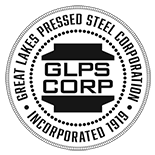Plating & Anodizing
Plating
What is Plating?
Metal plating is a process by which a metal, most commonly steel, is covered in a thin coating of a different metal, such as nickel, copper, or silver.
This process can be achieved using electroplating, where a piece of steel is submerged in an electrolytic solution along with the plating material. Electricity is run through the solution, causing an ion transfer that covers or plates the steel component in an even metal coating.
Electroless plating achieves a similar effect, but using chemical reactions rather than electricity. The object is submerged in an aqueous solution where it undergoes simultaneous chemical reactions that coat all parts of the steel in an even layer of plated metal.
Benefits of Plating
Metal plating is an essential step to preventing rust and corrosion on steel. The process can also improve the strength and durability of the product, change magnetism or conductivity, and help achieve a specific aesthetic appearance. Metal plating has applications across nearly all industries.
Why choose GLPS?
With more than 100 years in business, we have strong connections with quality platers across the Northeast and Midwest. These connections allow us to take your product’s unique plating specifications and find the provider that will best fit your needs and budget. It’s all part of our commitment to quality manufacturing from start to finish.
Anondizing
What is Anodizing?
Anodizing is a process that converts the surface layers of aluminum into a more durable anodic oxide finish. Anodizing is unique from metal plating because it uses an electrochemical process to increase the thickness of the existing metal, as opposed to coating a product with a different type of metal.
The process involves cleaning and then submerging the aluminum product into sulfuric acid. An electrical current is run through the solution, causing the release of oxygen ions and the conversion of the top layers of the aluminum into the anodic oxide finish. Different degrees of thickness can be achieved by keeping the product submerged for longer periods of time.
Benefits of Anodizing
Anodizing prevents unwanted oxidation and improves the strength and durability of aluminum products. Since it involves converting metal rather than coating it, anodized products will not chip or peel over time like other plated products.
Why choose GLPS?
We have worked with the best and brightest in the industry for more than 100 years. The breadth and depth of our connections enable us to find the best anodizer to meet your unique needs, product specifications, and budget.
*All of our manufacturing, assembly, and finishing is completed in the U.S.A from high-quality metals and other raw materials, the majority of which are also made in the U.S.A. From time to time we may source steel and other metals from Canada or other countries to offer our customers lower prices or where particular metals are not manufactured in the U.S.A. If having a product “all or virtually all” made in the U.S.A. is important to you, please let us know and if we can complete your order with entirely made in the U.S.A. materials, we will be happy to do so. We can also provide certificates, showing the place of origin of the metal, if requested at the time your order is placed”.
